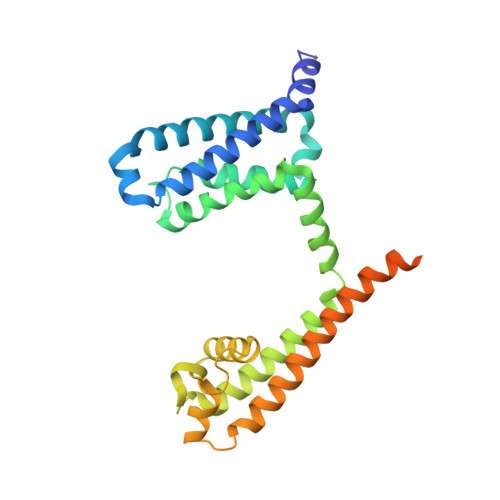The structural basis of divalent cation block in a tetrameric prokaryotic sodium channel.
Irie, K., Oda, Y., Sumikama, T., Oshima, A., Fujiyoshi, Y.(2023) Nat Commun 14: 4236-4236
- PubMed: 37454189
- DOI: https://doi.org/10.1038/s41467-023-39987-0
- Primary Citation of Related Structures:
8H9O, 8H9W, 8H9X, 8H9Y, 8HA1, 8HA2 - PubMed Abstract:
Divalent cation block is observed in various tetrameric ion channels. For blocking, a divalent cation is thought to bind in the ion pathway of the channel, but such block has not yet been directly observed. So, the behaviour of these blocking divalent cations remains still uncertain. Here, we elucidated the mechanism of the divalent cation block by reproducing the blocking effect into NavAb, a well-studied tetrameric sodium channel. Our crystal structures of NavAb mutants show that the mutations increasing the hydrophilicity of the inner vestibule of the pore domain enable a divalent cation to stack on the ion pathway. Furthermore, non-equilibrium molecular dynamics simulation showed that the stacking calcium ion repel sodium ion at the bottom of the selectivity filter. These results suggest the primary process of the divalent cation block mechanism in tetrameric cation channels.
Organizational Affiliation:
Department of Biophysical Chemistry, School of Pharmaceutical Sciences, Wakayama Medical University, 25-1, Shichibancho, Wakayama, 640-8156, Japan. kirie@wakayama-med.ac.jp.


















